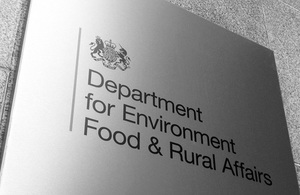Acid rain: 20 years on…
Chances are that back in the 1980s, acid rain would have been high on everyone’s list of environmental concerns. But what exactly is acid rain…

Chances are that back in the 1980s, acid rain would have been high on everyone’s list of environmental concerns. But what exactly is acid rain and is it something we should still be concerned about?
A report published today by the Acid Waters Monitoring Network (AWMN) shows that UK policies put into place some 20 years ago to reduce acidifying pollution have been successful and as a result waters in the UK are now beginning to recover.
However it’s not all good news - whilst the waters are recovering, there is still a long way to go before the plant and animal communities are restored to full health. For example there are many rivers and lakes still devoid of brown trout or salmon as a result of the damage caused by acid rain. There is also increasing concern that the recovery will be limited by other factors such as future climate change, meaning that further emission reductions may be necessary.
As a basic explanation, acid rain is caused by the burning of fossil fuels; burning oil, gas and coal in power stations releases sulphur dioxide (SO2) and nitrogen oxides (NOX) into the atmosphere. Motor vehicles add further nitrogen oxides (NOX) and then when these gases mix with water droplets in the atmosphere they create weak solutions of nitric and sulphuric acids. These solutions can then fall to the earth as ‘acid’ rain increasing the acidity levels of soils, acidifying rivers and lakes, especially those in the uplands, and creating a toxic environment for aquatic life. Over the past 22 years, these levels have been monitored and it’s this evidence, in addition to impacts of other pollution, types of land-use and climate change, that’s been drawn together into the AWMN report.
Environment Minister Lord Henley said:
“This report shows the impact of 20 years of Defra policies to tackle acid rain and the environmental damage it causes. It also demonstrates the opportunity we have to build on this success through forthcoming international agreements that will allow us to return damaged rivers and lakes to a healthy state where fish such as trout and salmon can flourish.”
In the near future, emissions of the pollutants which cause acid rain are expected to continue to reduce. This will help to create the conditions in which our damaged lakes and rivers can carry on recovering. To achieve the even higher reductions which will be necessary for continued recovery in the face of climate change, Defra is playing a key role in a number of international agreements such as the EU National Emission Ceilings Directive and the Gothenburg Protocol, which is currently under review.
Importantly, Defra and its partner organisations will also continue to study rivers and lakes damaged by acid rain, helping us to monitor the pace.